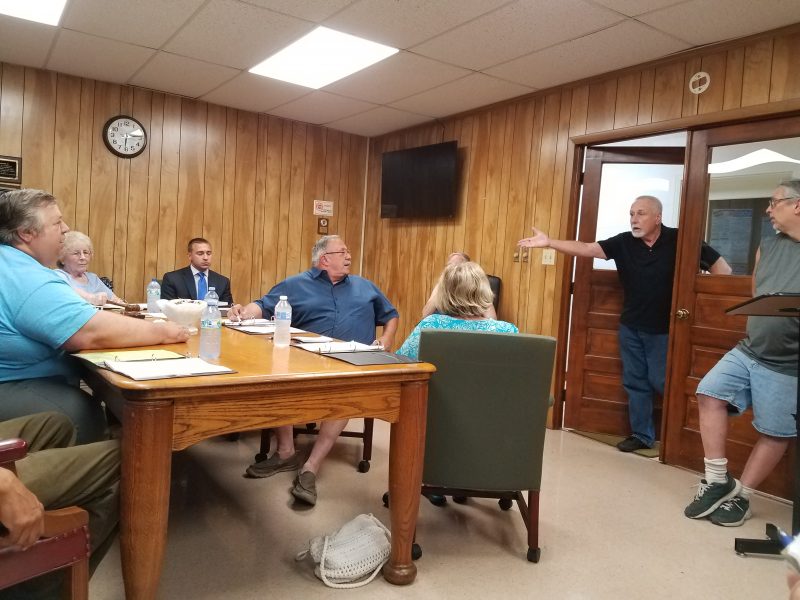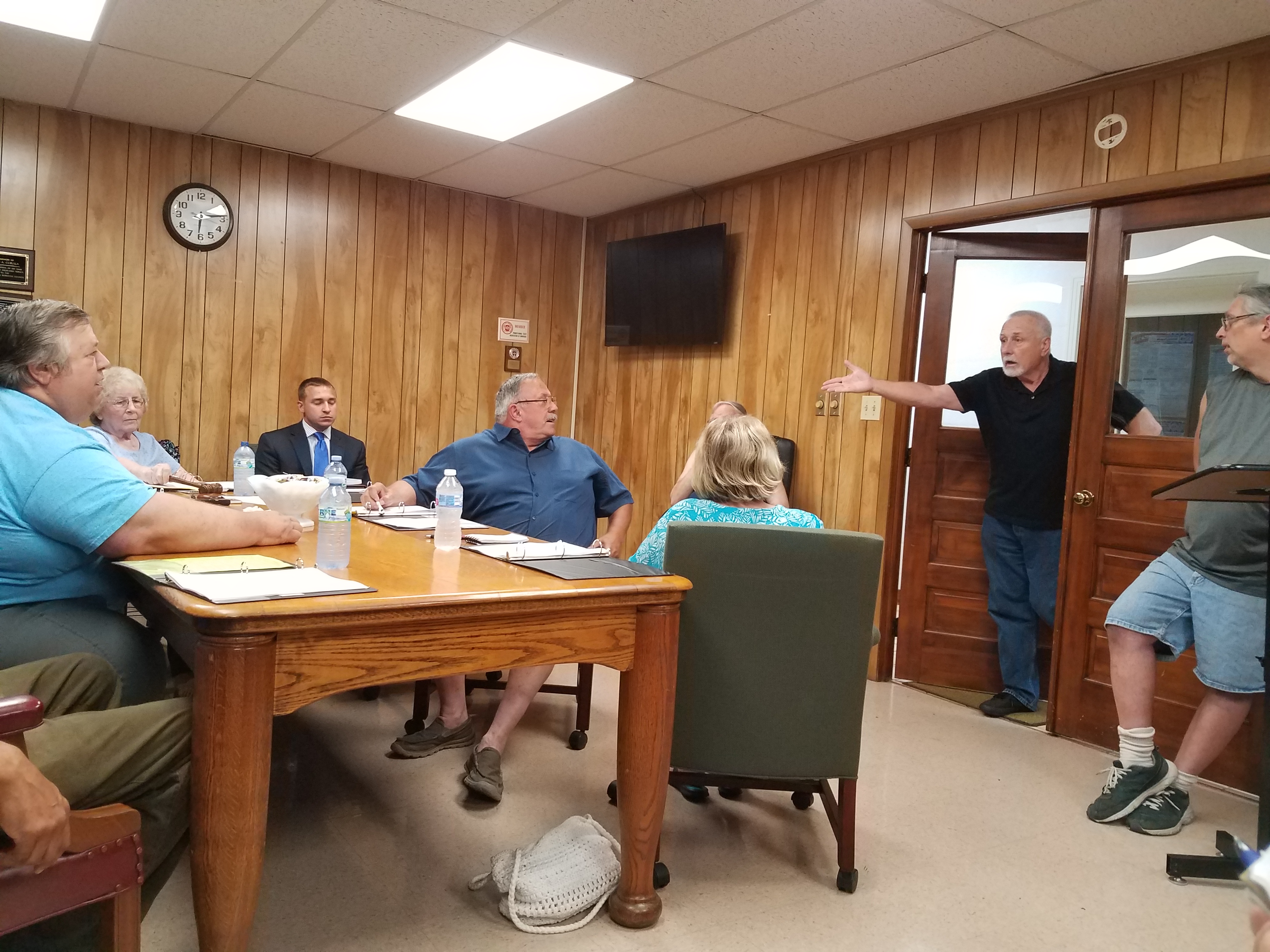
CURWENSVILLE – Tempers ran hot as the fate of Curwensville’s Chief of Police remains uncertain.
At Monday’s Curwensville Borough Council meeting, about 25-30 people questioned the council’s decision to terminate Police Chief Mark Kelly. The council had called a special meeting July 15 and voted 6-0 to terminate Kelly following an executive session.
However, before the public comment portion of the meeting, Mayor John Adams said he was reinstating Kelly, as per the statutes set forth in the Pennsylvania Mayor’s Manual.
Following Adams’ statement, members of council questioned Solicitor Ryan Sayers as to whether the mayor had the power to reinstate Kelly after the council had voted to remove him. Adams then said he was leaving the meeting to work on reinstating Kelly.
Sayers said he needed to further research the statute Adams had referred to before he could determine whether the mayor has the power to over-ride the council’s decision to terminate Kelly or not.
According to the Mayor’s Manual, “the mayor may suspend without pay any police officer until the succeeding regular meeting of the council, at which time or later the council may, subject to the statutes governing civil service for police if they are in effect at the time, suspend, discharge, reduce in rank or reinstate with pay the police officer 8Pa C S §1124(a).
However, it was the council, not the mayor, who voted 6-0 to terminate Kelly. The mayor can only vote at council meetings in the event of a tie between the members of council.
While the Mayor’s Manual outlines the procedures necessary for the council to reinstate an officer who has been suspended by the mayor, it gives no clear procedure for a mayor to reinstate an officer who has been terminated by the council.
The Mayor’s Manual says “the mayor has the ultimate executive authority over the manner in which the police department operates” and in section 1123.1(a) of the borough code, it says “the mayor has been given full charge and control of the chief of police and the police force.”
It also says “the council may remove, suspend or reduce in rank any police officer as provided by law subject to any applicable civil service statutes.”
The manual continues to say that “although the mayor has no vote in any of the foregoing personnel matters, the mayor does have the right to attend any and all special meetings of council and take part in any discussion of the council on matters pertaining to borough affairs.”
While Adams had no official vote to dismiss Kelly, he was in attendance at the executive session and during the final 6-0 vote to terminate Kelly.
When members of the public became engaged in a discussion with members of the council, which became heated at times, Adams returned to the meeting and was verbally confronted by Council Member Tom Carfley.
Carfley accused Adams of “voting in favor” of terminating Kelly at the special meeting and called Adams an expletive.
Carfley’s outburst led to further heated exchanges between the council and members of the public to such an extent that Council President Sarah Curulla had to use her gavel several times and eventually called the remaining borough police officer to escort a woman, later identified as Adams’ wife, out of the meeting.
When asked whether Kelly was reinstated, Sayers attempted to answer, but several members of the public began yelling and speaking over him.
Many of the members of the public asked why the council had issued a statement to the media saying that Kelly was negligent, inefficient, intemperant (sic), disobeyed orders and (for) conduct unbecoming an officer.” The public said they were upset that these statements “ran his (Kelly’s) name in the dirt.”
According to the Pennsylvania Sunshine Law, the council may discuss the decision to terminate an employee in executive session. However, any voting must be done in public and a reason for the termination must be given.
Under the civil service provision in the borough code, there are seven categories in which an officer may be terminated. Inefficiency, neglect, intemperance, immorality, disobedience of orders or conduct unbecoming of an officer is one of those categories.
Sayers attempted to explain this but was again spoken over by members of the public.
Reporter Kimberly Finnigan of GANT News asked if she may interject and reiterated what Sayers was trying to say. She said the council is required to vote in public and give a reason why Kelly was terminated.
She said there was a legal proceeding under way to determine whether the council was within their rights to terminate Kelly, but it was a personnel matter and could not be done at a public council meeting.
She said whether Adams has the authority to reinstate Kelly, after the council had terminated him, is yet to be determined, as Sayers needs to research the codes and statutes regarding the mayor’s authority in this situation.
Finnigan said as far as Kelly’s reputation, if it’s found that the council had erred in their decision to terminate Kelly, he has the option to file a civil suit at a later time.
“Nothing can be determined right now, at this meeting, so everyone needs to just dial it back,” she said.
Following Finnigan’s statement, several members of the public left the meeting. The council continued through their regular agenda but called an executive session to discuss legal matters.
After the regular meeting and executive session had adjourned, Sayers told the media that an agreement has been reached to have Kelly resume patrols on Wednesday.
However, Sayers said he would be using Tuesday to research the issue of the mayor’s authority to reinstate Kelly. Sayers said that if it is found the mayor cannot reinstate Kelly, it will be addressed at that time.



